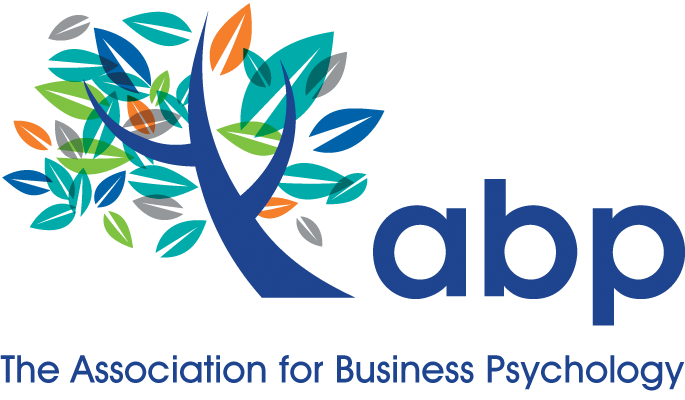What does a great day at work look like for you? Is it flying through your to-do list, to earn a quiet afternoon? Maybe it’s a hectic schedule, jumping from meeting to meeting, feeling productively busy? Or perhaps, it involves reaching a key milestone, feeling…

Lisa K. Desai, Psy.D.
Clinical and Consulting Psychologist
Chief Behavioral Health Officer, MindWise Innovations
In the business world, and in life, we regularly talk about the importance of teamwork. But why is teamwork highly valued? We know from literature spanning organizational theories and social psychology that the power of groups can outweigh that of an individual (Bottary, L. 2020; Dion, K.L 2000). Teams bring a sense of connection, personal and professional growth, boost self-esteem, provide a sense of individual and collective purpose, mutual learning, and bring a sense of achievement. To be successful, teams need a solid cultural foundation that supports growth and leaders who can celebrate the wins and navigate losses.
In my role at MindWise, I take a consultative approach when working with organizations to determine behavioral health needs. We begin by gaining information in a systemic fashion and use these learnings and insights to create and tailor mental health and wellbeing programs for senior leadership, managers, and teams. We routinely use focus groups, interviews, surveys and validated short assessments to gain understanding about the individual roles and interdependencies within a given entity. Two areas of focus that consistently emerge are culture and leadership
So, what is culture in the business sense? Many of us know a positive cultural environment when we feel it – it is comfortable, energizing, and genuine. Organizational culture is comprised of the identity, values, and behaviors espoused. Organizational identity is not only how members see themselves, but also how it is viewed by others. It is the same for a team – how does it identify, what values are established and how do behaviors align with those values? Is the team or organization, walking their talk? The type of culture at an organization impacts daily work streams, expectations, motivations, and job satisfaction. Increasingly, the incoming workforce – especially younger workers – evaluate work culture and an employer’s commitment to their wellbeing in a potential job as critically as they do traditional factors such as salary and benefits (Gallup, 2021). There are numerous ways of building a healthy, productive work culture. Psychological safety is one framework that has come to the forefront in recent decades.
Psychological safety was brought to the forefront by Amy Edmonson who describes it as ‘‘a shared belief held by members of a team that the team is safe for interpersonal risk-taking.’’ (Edmondson, A. 1999). Establishing a psychologically safe atmosphere must be spearheaded by leadership but cannot be maintained without the participation of team members. Benefits of a psychologically safe workplace include better connection and collaboration, openness to feedback, enhanced creativity, and increased pride in one’s accomplishments. Studies have shown that psychological safety boosts productivity and problem-solving (Edmondson, 2018). An essential aspect of psychological safety is the ability for teams and individuals to provide candid, constructive feedback to leadership. The following illustration summarized what psychological safety entails, and as importantly, what it is not:

Leadership role in building psychological safety. Leaders need to recognize the need for a strong, healthy work culture and commit to initiating and maintaining psychological safety. Leaders can put psychological safety in action by modeling the following behaviors:
- Verbalize intent and commitment to culture change.
- Ask questions across the organization, especially as it pertains to one’s team.
- Create pathways for employee feedback and solicit input frequently.
- Communicate learnings based on employee feedback, through report-outs.
- Show appreciation for ideas and questions.
- Promote productive dialogue.
- Talk openly about mistakes so that setbacks are viewed as part of the growth process.
Over the years, I’ve had the opportunity to work in corporate settings and higher education to address behavioral health needs in organizations. I would like to capture a bit of work in two disparate worlds where establishing psychological safety and integrating behavioral health resources systemically have been successful. The two industries – Construction and Collegiate Athletics – are incredibly different, yet both share two key components: Emphasis on team performance and the need for strong, effective leadership. Sharing an overview of the work with two clients may serve as a model for other workplaces.
Case Study 1: Construction. The case for addressing mental health in construction is strong. As an industry, construction ranks among one of the top at-risk industries for suicide according to the CDC; in 2023 the suicide rate among construction workers remained 4x the national average. Similarly, in the UK workers in construction are at high risk of death by suicide, 3.7 times higher than the national average (Mates in Mind, 2023). At MindWise, we often work with construction companies to provide behavioral health services and trauma support. In our systemic approach, we begin by understanding the current state of the ecosystem. During long-term work with a leading, multinational construction company our current-state analysis began with a series of 12 focus groups across job roles. Examples included: foremen/superintendents, leadership, women in construction, office staff (engineers, project managers, designers), laborers (including brick layers, carpenters, ironworkers, and others). My colleagues and I were struck by the candor and readiness to talk about mental health in each of these groups. Recurring themes involved the prevalence of anxiety, stress, and burnout; concerns about substance misuse; and a lack of knowledge about mental health resources. The following are examples of what we heard:
“Things have to get better or else the industry will suffer” (regarding opioid misuse)
“We have to go from policing to preventing.”
“Foreman don’t have official training on what signs to look for. “
“What we learn about mental health, we could use at home, too.”
“Need for stronger connection and communication throughout the system.”
For the next steps in the consultative process, we developed trainings and provided individual coaching with the goal to increase understanding about mental health, substance misuse and suicide risk. We shared tools to have appropriate conversations and point workers toward available resources such as EAPs, clinical services, etc. Trainings were provided on the following topics: Behavioral health literacy, psychological safety, mental health crisis readiness, and peer support. Additionally, ecosystem needs were addressed by revamped use of wellness trailers and monthly wellbeing calls. The graphic below illustrates the ways we addressed behavioral health in the construction client ecosystem; it is a work-in-progress with provision of resources to build internal sustainability. For example, safety leadership now lead toolbox talks and feel more equipped to talk with team members who are struggling – not to provide counseling but rather to encourage help-seeking and point colleagues to professional services.

Case Study II: Collegiate Athletics. The National College Athletic Association (NCAA) is a nonprofit organization in the USA that regulates collegiate athletics. In recent years, the NCAA has identified mental health and wellbeing as a priority for student athletics and since COVID has also recognized the need to support the wellbeing of coaches. A 2022 wellbeing study of coaches found that nearly one-third of coaches reported they ‘constantly’ or ‘most every day’ experienced mental exhaustion, feelings of being overwhelmed by all that they do, and sleep difficulties. (NCAA Survey, 2023). In the UK, a study from Wales found that coaches experience stress as demands across three domains: Performance, Organizational and Personal (Baldock, L. 2020). Addressing athletic staff wellbeing can prevent burnout and attrition, contribute to healthier, happier coaches which might translate to more effective job and team performance. In 2023, my colleagues and I were engaged by a Division 1 collegiate athletic conference to support wellbeing across their nine member universities. The goal was to assess and understand mental health needs within each athletic department, then develop and deliver standardized trainings to student-athletes, coaches, and staff. We delivered the in-person trainings on each campus during that year. The following is a glimpse of salient themes we heard from coaches and staff:
- The impact of COVID on campus athletics continues.
- Need to distinguish between anxiety/stress/busyness.
- Coping tools needed to manage anxiety, stress, burnout, and depression.
- Social media has a noticeable impact on self-esteem, relationships, and expectations.
- Need more clarity about how to address suicide prevention effectively and appropriately.
- Athletes have high self-expectations, can struggle with feedback, and fear failure.
- System wide issues acknowledged – regarding holiday schedules for games, and transfer portal.
The following graphic was part of a take-away which could be distributed and posted in offices and team spaces to reinforce the learnings about operationalizing psychological safety:

About the Author: Lisa K. Desai, Psy.D., worked as a clinical psychologist for over 20 years before developing expertise in organization psychology and consulting. Over the past 7 years she has worked with corporate clients, non-profit organizations, trade associations, and higher education to address wellbeing and mental health in systemic, practical and sustainable ways. Specific areas of interest include culturally informed mental health treatment and resources development, the intersection of living communities, global trends in workplace wellbeing, and suicide prevention in athletics. Dr. Desai routinely provides training and coaching to management teams and leadership.



